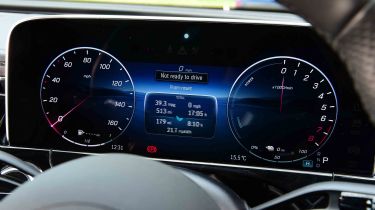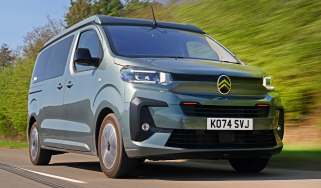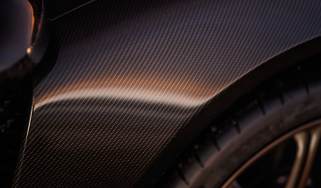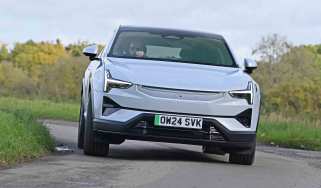Mercedes E-Class - MPG, emissions & running costs
Economical diesel engines will make fuel stops a rarity on cross-continental trips in a Mercedes E-Class

The plug-in hybrid E 300 e and E 300 de are the most economical models on paper. You can read more about them in the section below, but don’t expect to get near the advertised WLTP fuel economy figures in the real world, especially if you’re just using the engine once the battery is flat. The plug-in models have a smaller 50-litre fuel tank compared with the larger 66-litre tanks fitted to all non-plug-in petrol and diesel models.
The E-Class is economical compared with rivals. We’d recommend going for the E 220 d because of its excellent 58.9mpg fuel economy, which is great for those who do a lot of motorway miles. The entry-level E 200 petrol provides a respectable 44.2mpg, and might be a better choice if you mainly do short trips and don’t need the company car tax savings of the plug-in models.
The most powerful model without full-hybrid assistance is the E 450 d, which returns 44.9mpg. With over 360bhp, it’s really fast and luxurious yet still manages to be pretty economical overall, if not quite at the level of the E 220 d.
The two diesel engines produce emissions ranging from 126g/km to 165g/km, while the petrol E 200 sits between the two with a 146g/km figure. These versions will incur a higher Benefit-in-Kind (BiK) company car tax bill than the equivalent E 300 e or E 300 de plug-in hybrid model.
|
Model |
MPG |
CO2 |
Insurance group |
|
E 220 d |
58.9mpg |
126g/km |
36 |
|
E 200 |
44.1mpg |
146g/km |
41 |
|
E 450 d |
44.9mpg |
165g/km |
50 |
Electric range, battery life and charge time
The Mercedes E-Class plug-in models have a stand-out electric driving range thanks to a large - by PHEV standards - 25.4kWh useable battery. This provides around 70 miles of range before the petrol or diesel engines in the E 300 e and E 300 de models are needed. There’s even a near 60-mile range in the high-performance AMG E 53 model, too.
Used - available now

2022 Mercedes
E Class
35,714 milesAutomaticDiesel2.0L
Cash £25,800
2022 Mercedes
E Class
44,201 milesAutomaticPetrol2.0L
Cash £25,300
2020 Mercedes
E Class
35,726 milesAutomaticDiesel2.0L
Cash £26,187
2019 Mercedes
E Class
67,750 milesAutomaticDiesel2.0L
Cash £16,500The battery can be charged at a maximum rate of 55kW (60kW for the AMG E 53), which allows a 10-80 per cent top-up from a public charger capable of delivering such speeds in around 20 minutes. Most will prefer to charge at home using a cheaper overnight tariff, though. Using a typical 7.4kW wallbox charger, Mercedes quotes a 10-100 per cent charge to take three hours. Most other manufacturers quote a 0-100 per cent charge time, so we anticipate it’ll take around four hours to fully replenish a flat battery.
|
Model |
Battery size |
Range |
Insurance group |
|
E 300 e |
25.4kWh useable |
70 miles |
50 |
|
E 300 de |
25.4kWh useable |
67 miles |
50 |
|
AMG E 53 Hybrid |
25.4kWh useable |
59 miles |
50 |
Tax
All versions of the E-Class are subject to the luxury car tax because all models costs over £40,000 when new. This means a surcharge will be added from the second time the vehicle is taxed until it is six years old. The plug-in hybrid models have a small £10 discount because of the plug-in hybrid system.
Company car tax will be significantly lower for plug-in models than regular petrol or diesel models. Choose the E 300 e, and you’ll be charged Benefit-in-Kind (BiK) at 5 per cent, while the E 300 de and AMG E 53 Hybrid models will be charged at 8 per cent.
Insurance groups
Insurance groups in the E-Class go from 41 for the entry-level petrol model up to a maximum of 50 for the E 300 e, E 300 de, E 450 d, and high-performance AMG E 53 model. The BMW 5 Series will be cheaper to insure, because that rival starts in group 35, and goes up to group 44 for the quickest 550e plug-in hybrid version.
Depreciation
According to our expert data, the Mercedes E-Class should hold its value as well as the BMW 5 Series, maintaining between 41 to 50 per cent of its original value after three years and 36,000 miles. The best version is the E 200 AMG Line, while the model that depreciates most is the AMG E 53 Hybrid Edition 1.
To get an accurate valuation for a specific, model check out our valuation tool...
More reviews
Car group tests
In-depth reviews
Road tests
Used car tests
Which Is Best
Fastest
- NameE450d 4M AMG Line Premium 4dr 9G-Tronic [Pan Roof]
- Gearbox typeSemi-auto
- RRP£79,870








